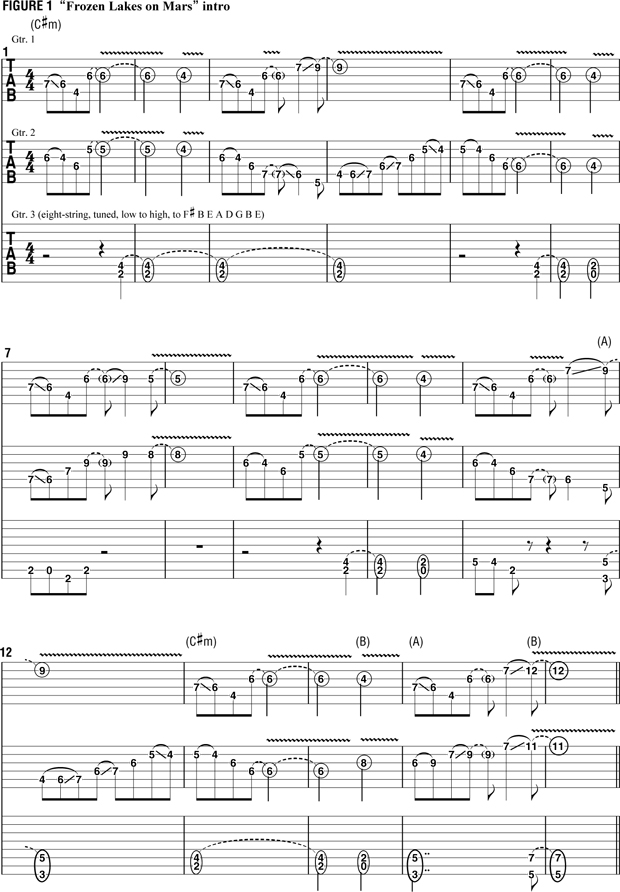When writing on a standard-tuned six-string guitar, I tend to move my fingers in familiar patterns and reach for the same chords and shapes. To break this habit, I employ a few go-to devices, including using alternate tunings, composing guitar riffs on a keyboard and introducing the extra range of a seven-string guitar into my writing. I used this last method to great effect on the final Emperor album, 2001’s Prometheus: The Discipline of Fire & Demise.
On my latest solo album, After, the majority of the riffs were inspired by the extended low range and new challenges offered up by an 8-string guitar (tuned, low to high, F# B E A D G B E). A few interesting points to note about the eight-string: As a result of the low F string, the guitar is only one whole step away from encompassing the entire range of a four-string bass. And due to the open F# and B strings, it is more tempting to write themes in F#, G#, B or C#, rather than the typical E, A, C or D keys that one is drawn to on a regular six-string guitar.
With the understanding that most of us play six-string guitars, I would like to explore some relevant examples based on the eight-string version of the instrument. A good place to start is the intro to “Frozen Lakes on Mars,” from After, as only one of the three guitar parts in this passage utilizes the additional low strings.
FIGURE 1 illustrates the first part of the song’s intro. The purpose of this 16-bar section is to establish the song’s tonic key of C# natural minor, also known as C# Aeolian (C# D# E F# G# A B). Guitar 1 plays a single-note line that passes quickly through the sixth (A) and fifth (G#) and lands on the root (C#) and then the upper octave. This four-note motif is harmonized above by Guitar 2, which ends on the minor third, E, to help underline the minor harmony. To make sure there’s no doubt what key we’re in, Guitar 3, the rhythm guitar, comes in on the fourth beat of bar 1 with a low C#5 power chord.
So why is this important? Well, the main riff of this song goes through the verses and is based on the G# Phrygian mode (which comprises the same notes as C# natural minor but rooted on the fifth, G#), and the resolution back to C# natural minor comes with the chorus. By clearly establishing the tonic key early in the song, I strengthen both the tension of the Phrygian riff and the feeling of resolution in the chorus.
The main melody of the intro lies in the Guitar 1 part. It goes through the repetitions with only a few variations, mostly in the final notes of the sequence. Guitar 2 adds color and more variation by moving either in parallel or contrary motion to the main melody, with some extra movement in bars 4 and 12. Guitar 3 provides basic harmonic accompaniment and emphasizes the C# tonic with only small variations. The section ends hanging on a B chord, the VII chord in C# natural minor. But instead of resolving to the tonic at the beginning of the next section, it leads to the song’s main riff, which is in G# Phrygian.

Get The Pick Newsletter
All the latest guitar news, interviews, lessons, reviews, deals and more, direct to your inbox!
“There are so many sounds to be discovered when you get away from using a pick”: Jared James Nichols shows you how to add “snap, crackle and pop” to your playing with banjo rolls and string snaps
Don't let chord inversions bamboozle you. It's simply the case of shuffling the notes around







![Joe Bonamassa [left] wears a deep blue suit and polka-dotted shirt and plays his green refin Strat; the late Irish blues legend Rory Gallagher [right] screams and inflicts some punishment on his heavily worn number one Stratocaster.](https://cdn.mos.cms.futurecdn.net/cw28h7UBcTVfTLs7p7eiLe.jpg)


